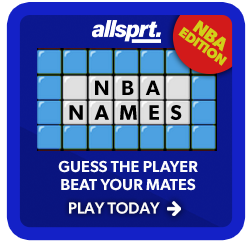Under the glare of the late summer's sun, they eye their surroundings through a grated grill. Sweat beads on their brow, eventually joining the mopped pool beneath their peak.
These eyes shift across to the scoreboard. Live calculators assessing the state of play. A pair of taps on the crease follow before a pyjama-clad bull is met at the top of their run. Shoulders hunched and hoofs tearing at the dirt, ready for gore beamed out on a delay.
The healthy attendance hums in anticipation. Strewn through the stands, with dense pockets corroborating around cow corner. Content to bathe in the rays while also holding silent hopes of being brought into play.
Whether chasing a score or setting one, the batsman's eyes scan this motley crew. Why not? There's a pay day on offer, after all.
This was Australia's domestic one-day cricket scene in the 90s and 2000s. High octane and high stakes, with high rewards on offer; sewn together with naff uniforms, engaged crowds and a galaxy of international stars at their most incandescent.
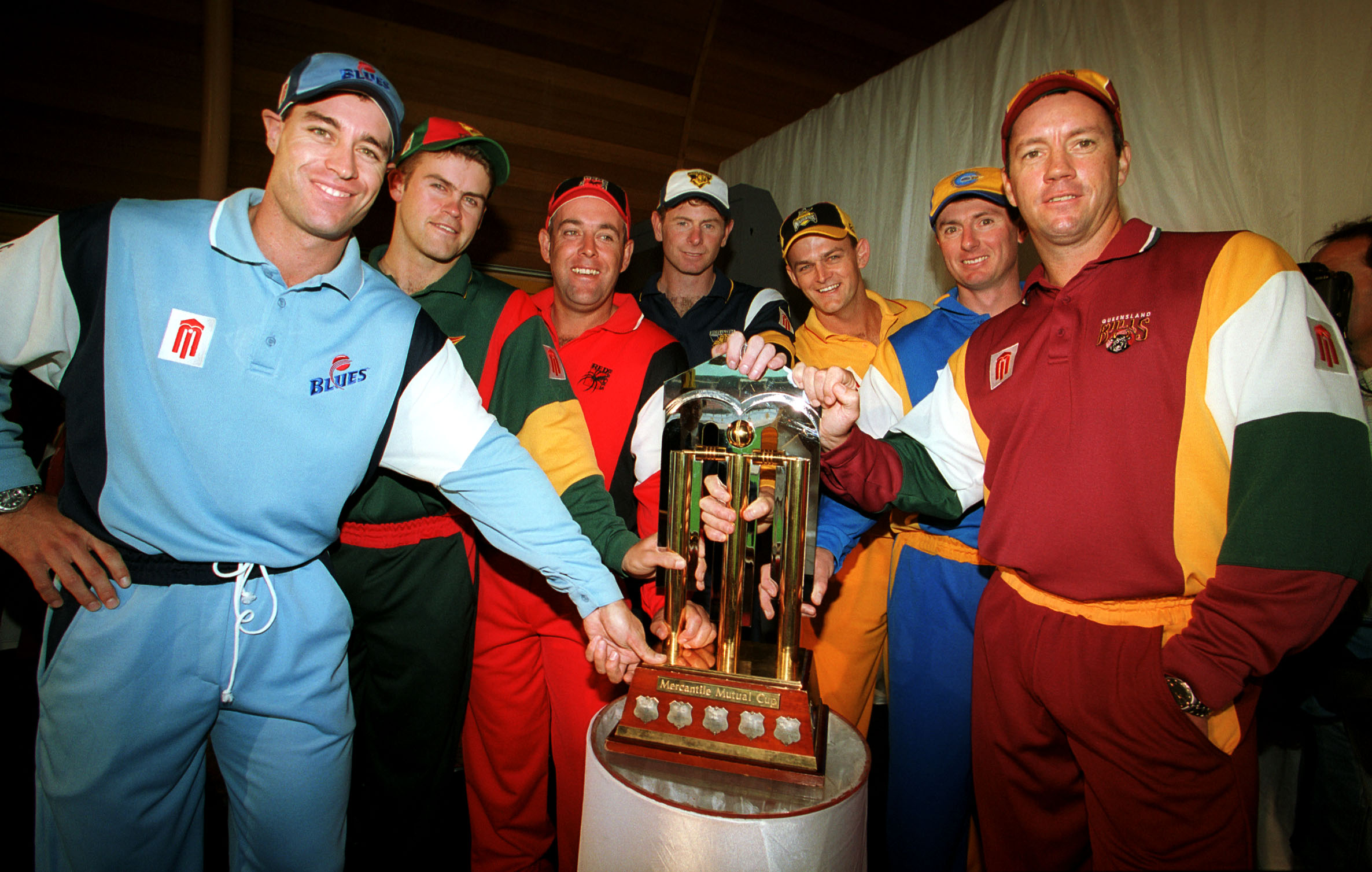
When first driven in by General Australasian in the summer of 1969/70, few saw limited-overs cricket as much more than a fad. With whites, red balls and strike rates lower than the minimum wage, these sceptical players and punters had a point.
In these dying years of disco, Kerry Packer's cricketing revolution brought the lights, cameras and action, with those on his books now decked out in colours and helmets, sending white balls flying to the tune of ‘C'mon Aussie, C'mon'.
Propped up by the sponsorship dollars of soft drinks, razors, fast food and insurance, domestic white-ball cricket began to hit its own notes throughout the remainder of the 70s and across the 80s. Household names were born as they did battle against Australia's brightest and a selection of the globe's heaviest hitters.
Yet, while Lillie, Marsh, Richards and Botham had crowds in raptures on both sides of the continent, it would take further tweaks and more marketing razzamatazz before the domestic game would eventually reach its true crescendo.
By securing the competition's naming rights in 1992, life insurers Mercantile Mutual became the latest indemnifiers to back the local game. But in a break from convention, the safeguarders rattled the cage, pivoting domestic cricket away from established eyeballs and into view of a youth base champing at the bit after a World Cup on home soil.
A new trophy, a fresh format and mass-produced, mascot-embossed merchandise were thrown at a generation crying out for cricket on the go, not just the game that their grandparents fell in love with.
This tactic of 'more cricket on the box, more often' has become a winner with Gen-Z via the Big Bash League, with quick action, high scores and hokey monikers still de rigueur during prime time today.
Still, these kids raised on streaming services and apple slices in their Happy Meals will never know the pocket change a crowd catch could amount to, nor the riches hitting the sign would duly deliver.
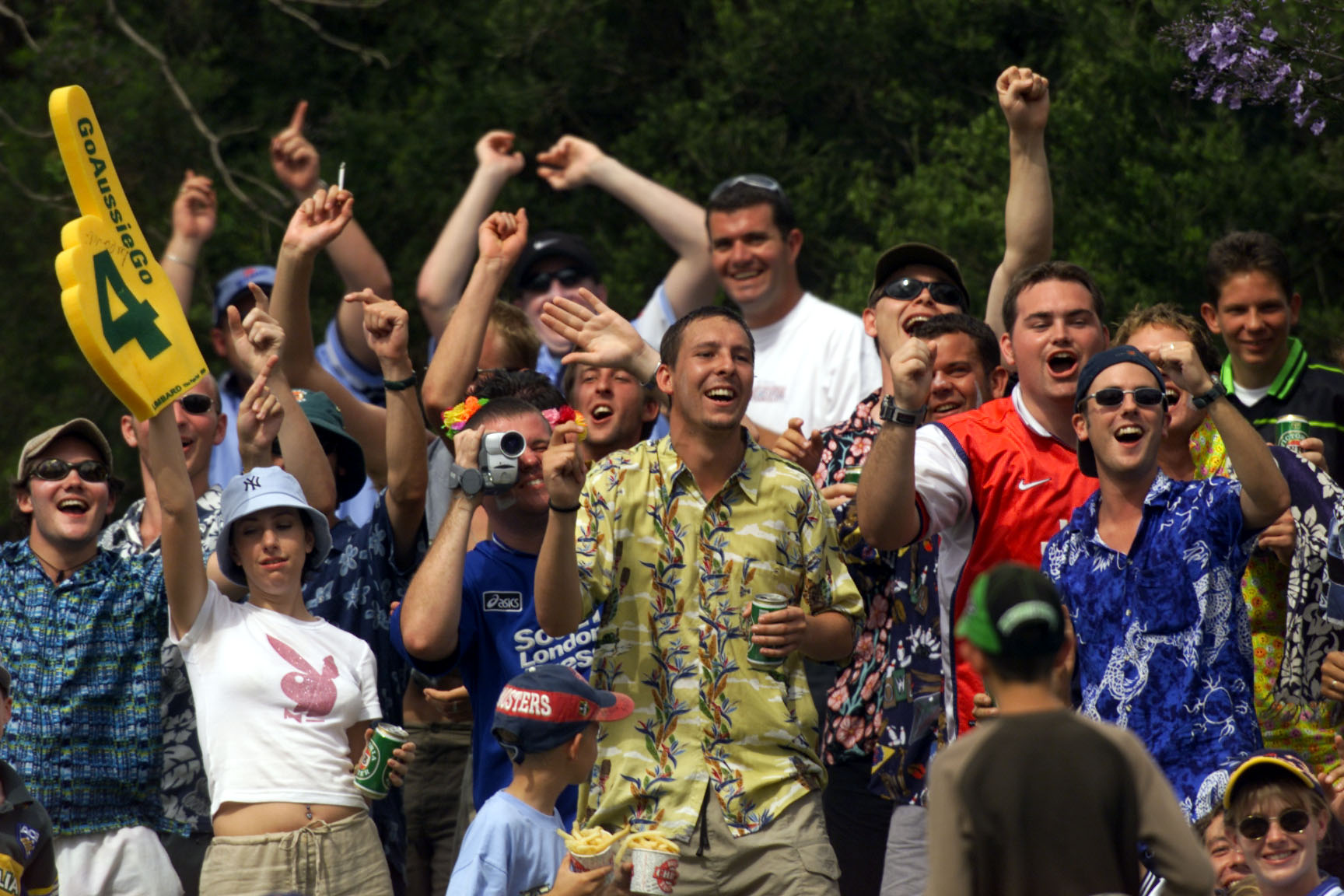
Originally bolted to the sightscreens at either end of the ground, or floating freely beyond the reach of long on, the Mercantile Mutual signs were erected in the summer of 1992/93, providing cash prizes for technically proficient drives.
By the time Mercantile Mutual was swallowed by multinational bankers and financers Internationale Nederlanden Groep (ING) in early 2001, slogs square of the wicket were also rewarded. Generous folks, the Dutch.
For those familiar with MM's aesthetically pleasing logo, the three-pillared branding with its centre circle still soothe the mind - an artist's impression of a length ball crashing into middle stump.
It is rumoured that in the early stages of development, the logo's centre would be hollowed, allowing the most precise batsmen a $1 million prize should any shot fly true through the hole. Mysteriously, the Australian Cricket Board (ACB) quickly put the kibosh on any seven-figures paydays. Not as generous, those suits in Jolimont.
Mercantile ran their rewards program like the lottery, with cash prizes jackpotting after every game passing without a hit. By October of 1995, the reserves remained untouched and the figure on the cheque had blown out to a cool $140,000 – a windfall finally collected by Australian captain-in-waiting Steve Waugh following his pinpoint straight drive at the WACA.
Among the Diamond Draft-soaked celebrations that afternoon was a 22-year-old Shane Lee, still learning his trade as an all-rounder for the NSW Blues, and just under a month away from making his international debut in green and gold.
Lee would take four wickets that day, setting up another New South Wales win en route to the competition final. But, for the now 49-year-old, it was the invitation to share in Waugh's spoils that rang truest on recall. As for where the injection of funds went, that's another story.
“Steve divided the jackpot immediately between the guys. I think I got about $10,000 out of that, but I have no idea what I spent it on," Lee told Zero Wicket.
In the summers to come, a further eight players would hit the sign on nine occasions, drawing a total of $905,000 in prize money from both Mercantile and ING's coffers.
The next cab off the rank? None other than Shane Lee, himself.
Almost three years to the day after Waugh went deep, Lee dispatched an Ian Garrity long hop in the nation's capital, netting himself a cool $90,000. The overjoyed all-rounder knew exactly where his earnings would be spent, immediately letting his batting partner, Rod Davison, in on the itinerary.
"It was straight down the ground at Manuka. It was quite a long boundary. As soon as I hit the ball, I knew it was going to hit the sign," Lee recalled.
I said straight away to Rod, ‘I'm taking the whole squad to Hawaii!'
However, as the impromptu travel agent found, even the best-laid plans often go awry. And before any Mai Tais could be thrown back, the Blues' beach getaway went from Pipeline to pipedream.
“It was going to happen. Everyone was all excited, but Michael Bevan complained because he wasn't playing that day and he reckoned his wife wouldn't let him go to Hawaii. He forced me into doing what Steve did," Lee punctuated with a hearty chuckle.
“He put the pressure on me to change plans, which I now regret.”
“I just thought it would be a fantastic thing to do with the whole squad. We all would have had those memories today, but it wasn't to be.”
Lee would eventually get over to the Rainbow State, just not with the likes of Phil Emery, Shawn Bradstreet and Bevan in tow.
Though forced into finding an alternative destination, Lee and a few friendly faces did make tracks once the kitty was divvied up.
“I think we had about $7000 each to spend. A few of us might have gone on an end-of-season trip somewhere," he said.
“They were good memories, and it was a great time. The celebrations that night went long into the evening.”
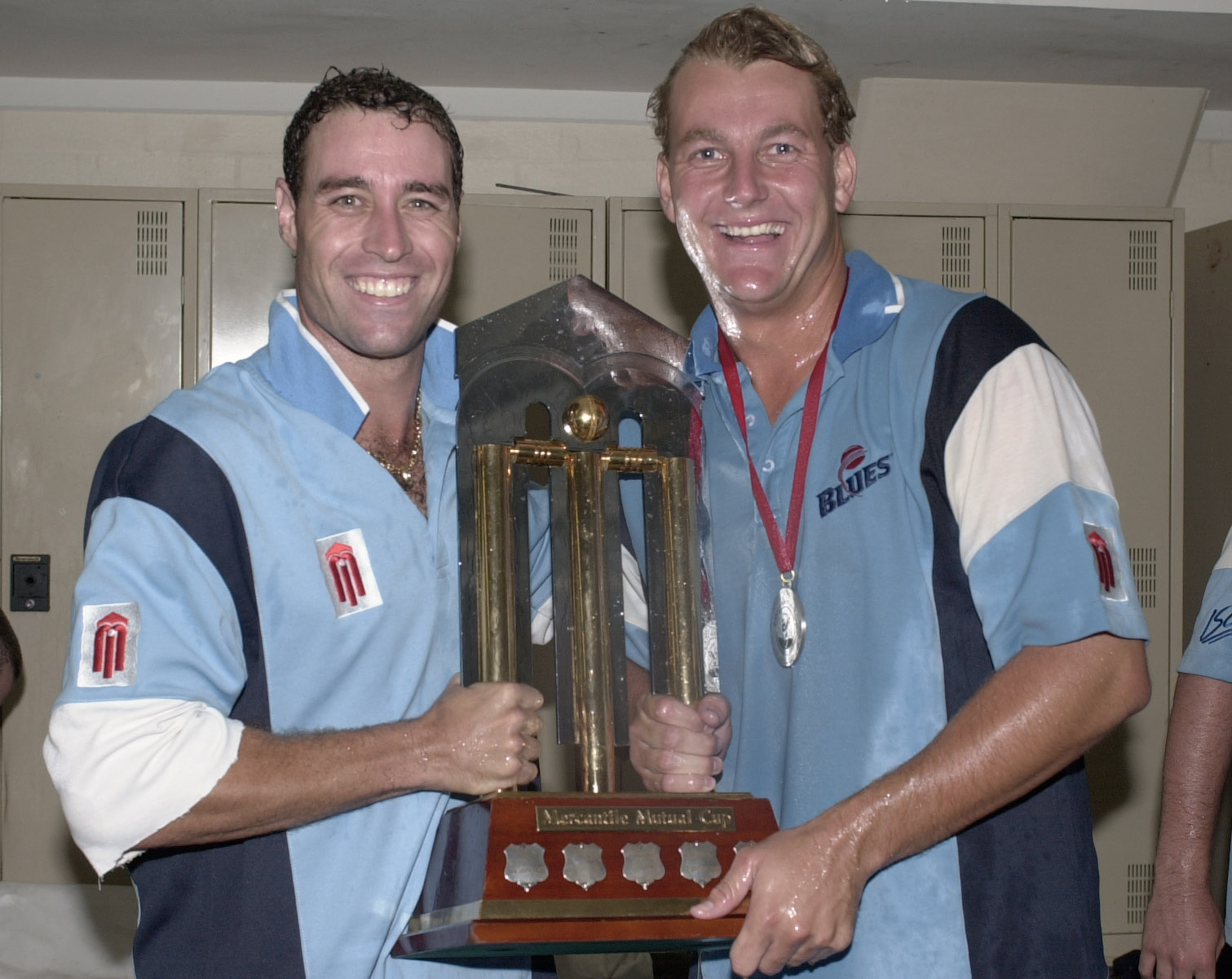
Throughout the opening eight seasons of the jackpot promotion, New South Wales held a monopoly over the riches, with Waugh and Lee cashing in before gloveman Brad Haddin clubbed Darren Wates at the WACA in early 2000, earning another payout to the tune of $150,000.
Four years later, the next Sydneysider was added to the honour board when Matthew Nicholson hit Queensland's Nathan Hauritz across the line at what is now Accor Stadium.
Now 19 years on from that afternoon, the one-time Test cap confessed to having a hazy recollection of events when contacted by Zero Wicket.
“I'd forgotten I'd even hit even hit it until you mentioned it," Nicholson admitted.
“I don't think I batted for very long. Have you got the scorecard there? I might have got 15 or something towards the end. I don't think I had a lot of time to do much.”
Regarded as a bowling all-rounder, Nicholson stressed he never had the sign in his sights. But with the ropes brought in, the then 30-year-old did have a target in mind.
“The Bulls had the likes of (Michael) Kasprowicz and (Ashley) Noffke, I couldn't get those blokes away," Nicholson said.
I'm not sure what 'Haurie' was doing bowling towards the end. It was definitely premeditated in the sense that he was about the only bowler I could hit.
"It was at the old Olympic Stadium. They used to play the one-dayers with the wicket running lengthways like the rugby league field, so the square boundaries were pretty short."
Partnering with Mark Waugh to set a total, Nicholson worked earnestly, scoring a handy 25 from 22 balls - a precision that ironically evaded him for his cash-injected six.
“The shot itself went pretty flat and probably only flew about 10 metres off the ground. It was a bit of a mishit, so it swung another 10 metres in its travel," he detailed.
"I guess that's what you get when you try and slog the off-spinner.
“It never looked like it was going to hit the sign, and I was never really thinking about it, but it just kept swinging and then there was a big bang.”
Although on target, Nicholson's dead-eyed mishit earned him just a fraction of what Waugh, Lee and Haddin had pocketed during the 90s.
"There used to be quite a bit on it before my shot. The was more and more interest as it kept jackpotting," Nicholson said.
"I'm not sure there was much on the sign when my turn came around. Maybe $50,000. It wasn't a huge amount compared to the previous years where guys had had wins like $200,000."
Carving up his spoils also proved dispiriting, with little more than a cab ride home to the North Shore covered after teammates, third parties and the government claimed their slice.
"How it worked with us was that the person who hit the ball got two shares with another share put aside for charity. Everyone else got one, so that makes about 13 or 14 shares. After you take tax out, there wasn't a hell of a lot left over, maybe a grand or two for each person," Nicholson recalculated.
“I reckon mine just went into consolidated revenue for the family. Probably just the mortgage or something. Nothing fancy, that's for sure."
“Still, it was a bonus that nobody was counting on. There definitely wasn't as much money in the game then, so it went down pretty well. You were always pretty grateful for any cash that came your way for playing the game.”
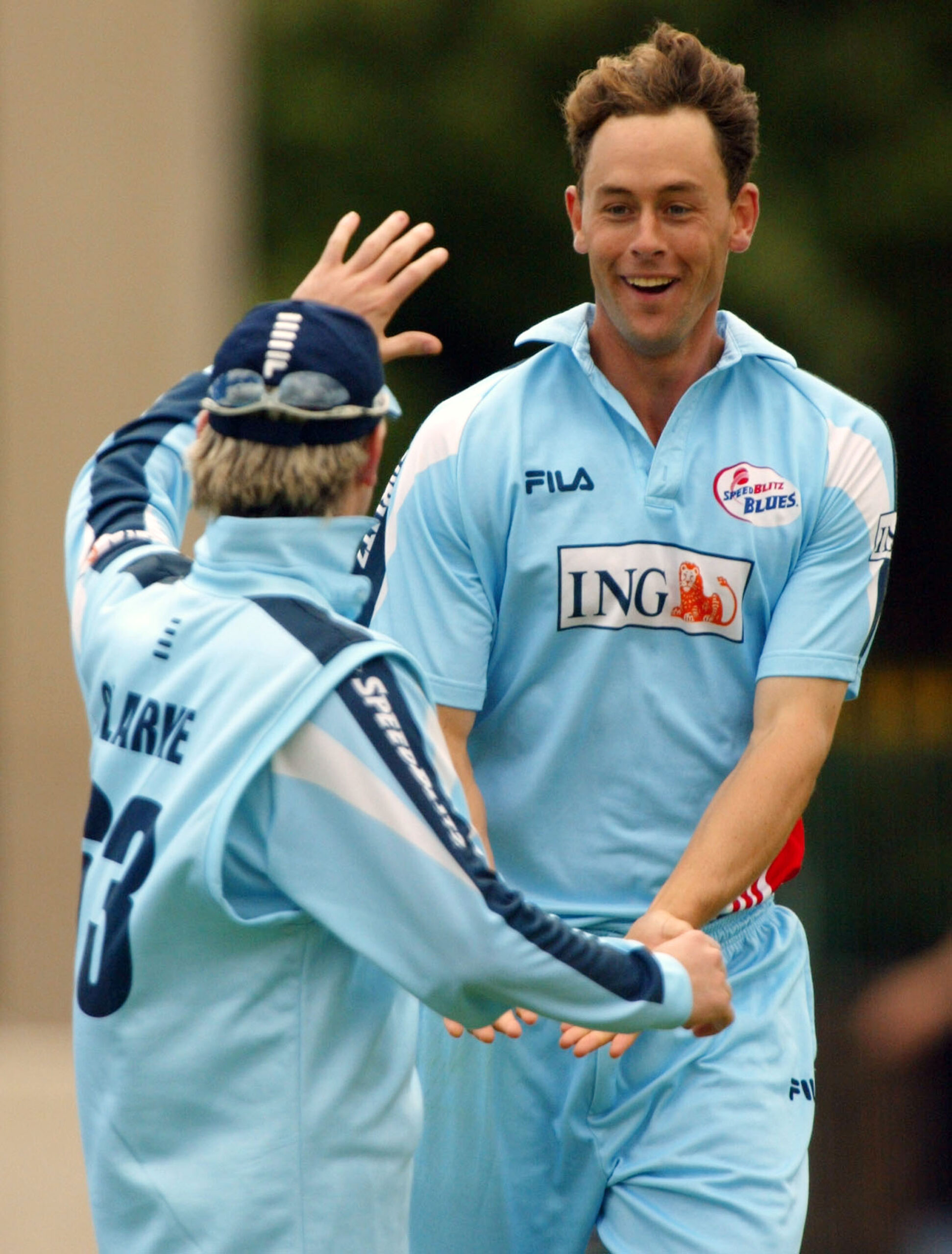
The catalyst for the marked-down prizemoney came during Nicholson's days as a rookie with the Western Warriors, days spent under the leadership of Adam Gilchrist, Brendan Julian, Justin Langer and Michael Hussey.
At the pointy end of the 2001/02 season, the Warriors hosted Nicholson's soon-to-be Blues at the WACA. While sitting outside Hussey's XI for the February day-nighter, Nicholson watched on from the stands as Hussey cashed in under lights.
“I was there for the game where Mike Hussey hit it, the game where he decided to take a huge amount of the share," Nicholson said.
"He ended up taking about 40 per cent for himself. It didn't go down too well in the change room."
Starting his Test career late before rising to the role of Australia's change room chorus leader, from the outside in, it seems incongruous that Hussey's approval rating was ever once on the slide.
Known aptly as 'Mr. Cricket', the Western Australia earned plaudits the globe over for his sound stroke play, determined conversion rate and analytical mind - the latter skill still prized in both the coaching and media spheres.
Yet, when 26, still a summer shy of taking the Warriors' captaincy reins, Hussey was caught between the proverbial rock and hard place after sending a Dominic Thornely rock across the rope.
Like Nicholson, many of the specifics of Hussey's own money shot have been blurred by time.
“I can't even remember who we were playing. Was it against New South Wales? Did we win that game?” Hussey questioned when reached for answers by Zero Wicket.
To quickly fill in the blanks, Hussey's Warriors and the Blues were facing off in a do-or-die semi-final. The hosts went home defeated, falling short by three runs after Blues opener Corey Richards bludgeoned 151 at better than a run a ball.
While footage of his shot is yet to surface online, the 47-year-old's version of events is still sharp; his senses as dependable as ever.
“It was a big slog over square leg and just the noise it made after it crashed into the metal sign. There was a big clatter there," Hussey recalled.
As the champagne corks popped in the visitor's rooms post-game, Hussey was left open to a change room inquiry, not from any media throng however, but from those within his inner sanctum.
“Afterwards, it was just ‘what are you going to do with the money? What are you going to do with it?' It was worth quite a bit by that stage," he said.
"I think it went up by about $10,000 for every game that it wasn't hit. It was up at $200,000 by the time I hit it.
“Some guys were asking whether I was going to take the lot. Other guys were saying I had to split it up evenly. I had no idea."
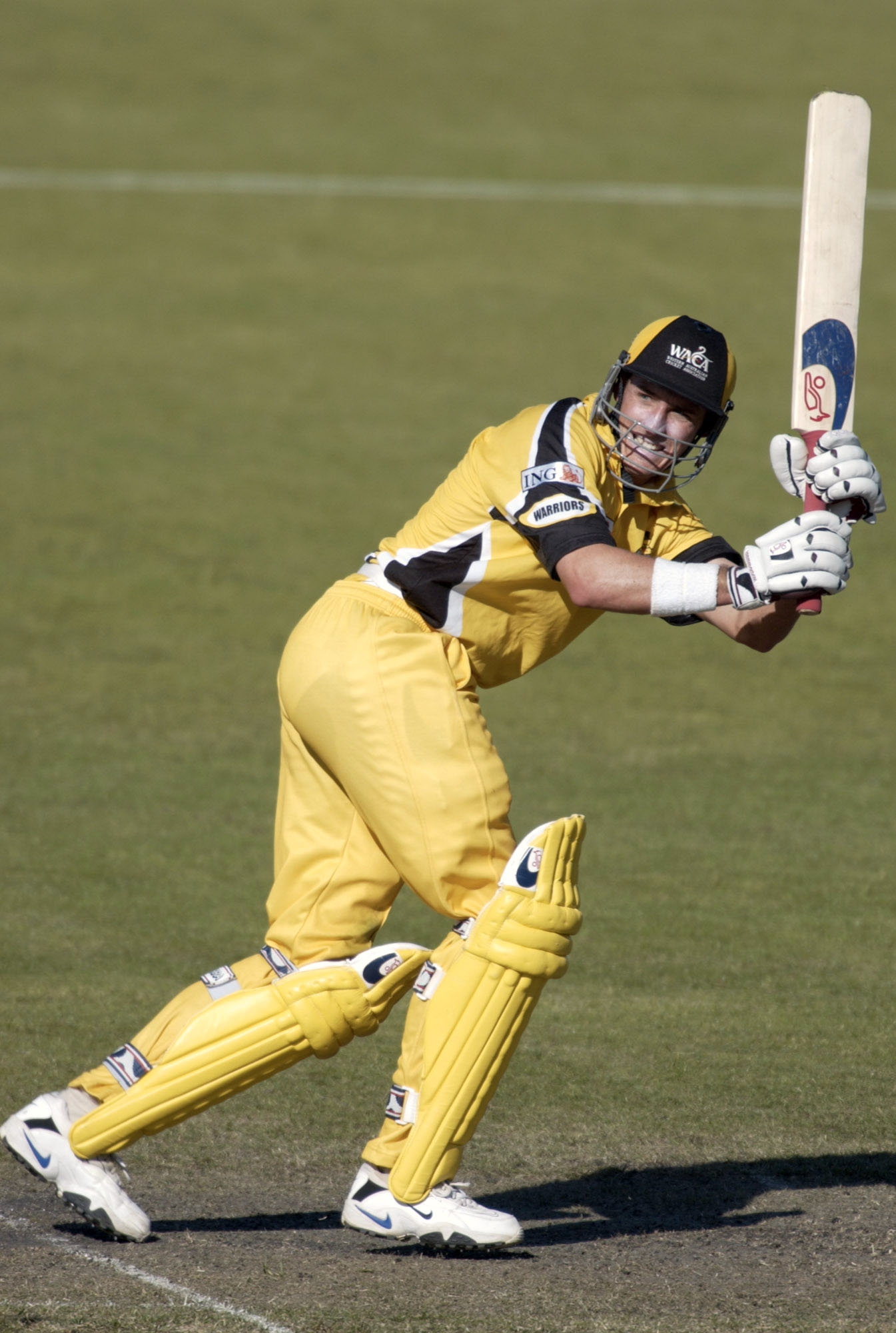
Hussey looked to the rule book for guidance, coming up empty as his pockets were filled.
“I remember speaking to the ACA (the Australian Cricketers' Association) about the protocol because we hadn't discussed it as a team before then," the decorated left-hander said.
“Steve and Shane broke the money up into even shares before taking a double share, everyone else got a single. I thought if that's what they did, I'd just go down the same path.”
Still, by the time the six-figure sum was carved, Hussey was met with scowls, not smiles, in the sheds, with eyebrows raised at the size of the dealer's take.
In his 2013 autobiography 'Underneath the Southern Cross', Hussey detailed the blowback that caught him off guard, writing that his teammate's public displeasure left him rueing his actions.
Nearly a decade on from penning those words, and more than two from the fateful slog that saw him foisted with a novelty-sized burden, Hussey explained the toll taken far outweighed the prize won.
“It's all in the past now, but at the time, it was pretty stressful. I didn't realise that some of the guys were upset with me taking more, I only found out later," he confessed.
It wasn't nice at the time, and to be honest, there were times when I wished I had never hit the damn thing. It was causing me more grief than anything.
"It's all in the past now and I've just got to move on. That's life.”
But where exactly did his lion's share go in the end?
In keeping with character, Hussey's $80,000 was spent wisely, keenly and ahead of step.
“I was just about to get married and we had just bought a house, so I put the money straight into paying that off. Which is always handy,” Hussey revealed.
In the wake of Hussey's quandary, the accountants at ING put their foot down as the players came together to remove any ambiguity when dividing the loot.
“After Mike's shot, It was written into all of our contracts that the prize would have to be shared evenly and the figure was capped at $50,000," Nicholson said.
Interspersed between Lee's drive, Hussey's pull and Nicholson's mishit, a further four names hit their way into the history books.
A trifecta of Redbacks made use of the Adelaide Oval's short square boundaries, with Callum Ferguson, star Zimbabwean import Andy Flower and Graham Manou, twice over, all celebrating mid-innings.
Current Perth Scorchers coach Adam Voges became the final name etched on the honour board after dispatching a Stuart MacGill full toss in just his second game.
Others weren't as fortunate. Take Australian cricket's unluckiest man, for example.
On his way to an innings-steadying ton for the Bushrangers in 2003, Brad Hodge slapped New South Wales spinner Aaron O'Brien over the midwicket boundary at Bowral and into the sign.
But after bringing in ING's on-site adjudicator to break down the slow-mo replay, Hodge's windfall was wound back, with the ball deemed to have hit the frame around the sign rather than the hoarding itself.
While $25,000 was eventually donated to charity in Hodge's name, it will have been scant consolation to the man whose Test career ended just three matches after scoring a double-ton.
https://www.youtube.com/watch?v=mWcluBIMdJM
Not long after Voges' cheque was cut in October 2004, the signs came down for good. Left to degrade in the cultural wasteland beside every pair of JNCO jeans and Jason Donovan cassette in existence.
In their place came the fireworks and forced fan engagement of the BBL.
While the kids of today seem to love it, tuning in every night, live and free in prime time, nothing will rival the organic roar and mid-over celebrations that arose across eight sweet summers of precision slogging.
Most of Manuka Oval's banks are covered now. The wooden pews in Adelaide have been removed with the Lillie-Marsh Stand largely dormant, too. But even if the heroes of yesteryear hold patchy memories of their days in the sun, for the motley crews that once crowded around cow corner, the sound of leather meeting metal will last long after today's fireworks have fizzled.

